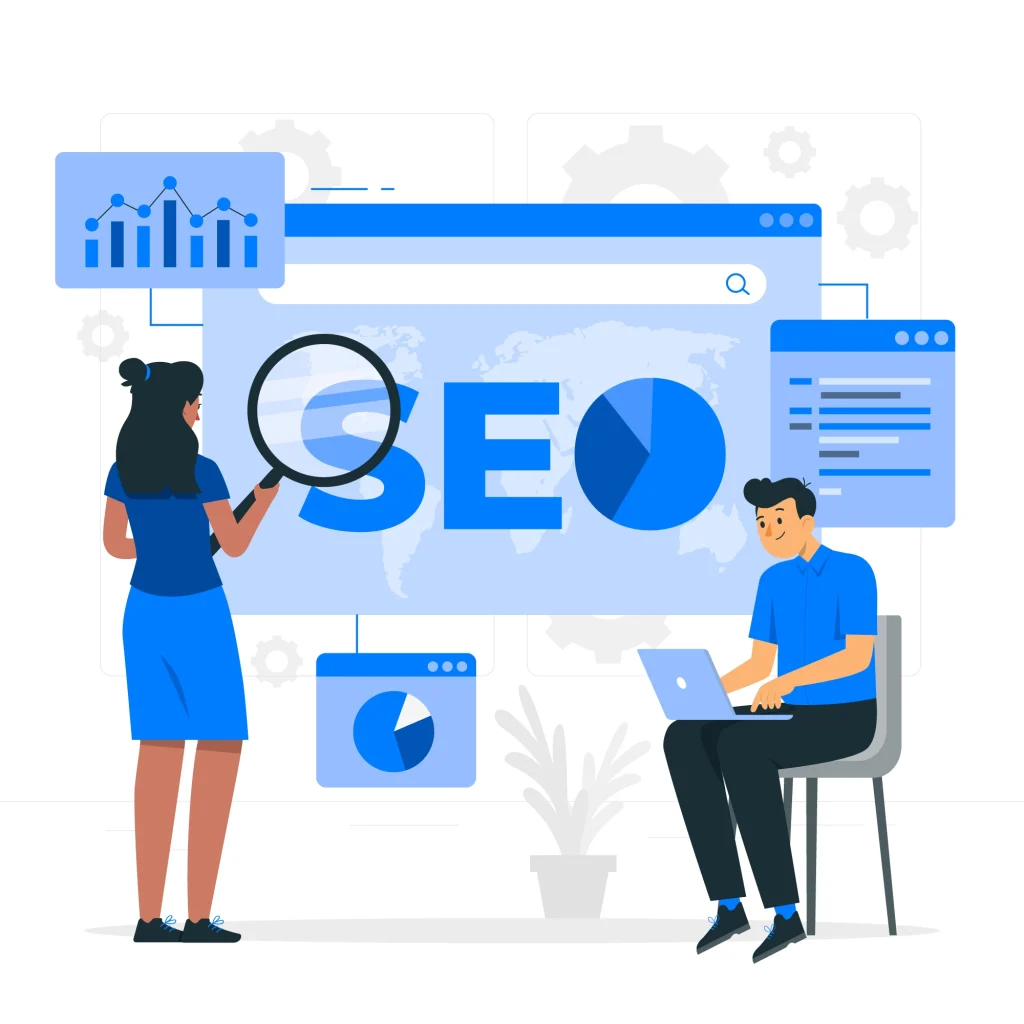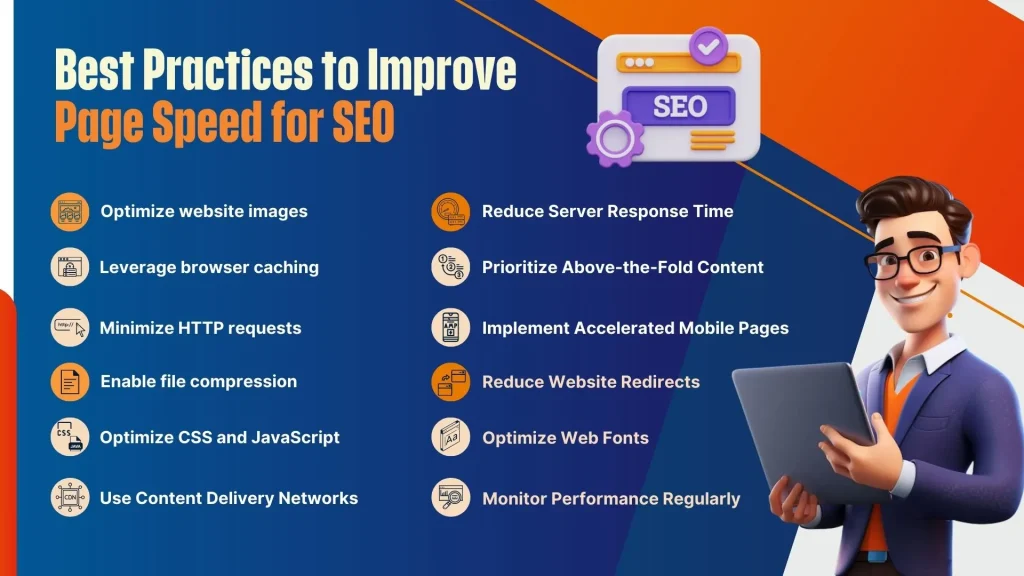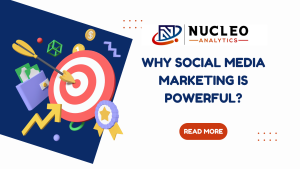How Page Speed Affects SEO and Google Rankings?
Can a page’s loading time impact its SEO?
A resounding Yes! Page speed is a direct ranking factor since Google’s Algorithm Speed Update.
While designing any website, the developers often spend significant time optimizing page speed to improve user experience. Earlier Google gave higher rankings to faster-loading websites than slower ones.
It leads to the common question: Does page speed impact search rankings today?
If YES, how important is it?
Let us explore what is page speed, and its relationship with SEO, assessing the extent to which speed continues to influence search results.
What Exactly is Page Speed?
Page loading speed refers to the total time a page on your website to load. There are specific metrics to calculate the page speed. Page speed insights is an online tool Google provides to identify performance issues on the website. Although mostly related to technical Search Engine Optimization (SEO) issues, the tools also analyze the site from a User Experience and accessibility point of view.
Page speed is relative as it depends on various factors such as:
- the performance of the website
- the server’s performance
- the web page you are currently on
- the type of connection
- the internet service provider of the user
- the internet package
- the device’s processing power
- the browser
- what the user is doing at that point
- how many apps are running
Let us discuss the page speed measurement metrics.
- Time to first byte (TTFB): The TTFB metric measures the length of time to load the very first byte of information on your page. Also, it is ideally a good indication of how fast the server loading time is.
- Time to Interactive (TTI): TTI refers to the length of time it takes for a page to load the interactive elements. It is a good way to see if your website is being slowed down by JavaScript.
- First contentful paint (FCP): The FCP metric refers to the amount of time it takes for the first element of content to load on your website. It could be text, an image, or infographic.
- Load time: The load time metric is the amount of time it takes to fully load a page and all its elements.
- Mobile first: Technically it is not a measurement metric of page speed, but a vital part of how your website’s loading time is calculated. While assessing the website speed, the tool looks at the mobile version, not the desktop version.
That’s because speed is even more significant when you’re using a mobile device, and it’s often here where the basics of page speed optimization are overlooked.
Why is Page Speed Critical for SEO?

Page speed is an important component for Search Engine Optimization (SEO) because addressing the website loading times improves your search rankings. Improving page speed involves optimizing images, leveraging browser caching, reducing server response times, and minimizing code (HTML, CSS, JavaScript). By enhancing page speed, businesses can improve their SEO performance and achieve better rankings on Google.
Page speed significantly impacts SEO and Google rankings for several reasons:
#1. Positive User Experience: Faster-loading pages provide a better user experience. Website visitors are likely to stay on a website that loads quickly. So, this can leads to lower bounce rates and higher user engagement. A positive user experience is a key lever in Google’s ranking algorithm.
#2. Better Mobile Optimization: The increased use of mobile devices for browsing, and page speed is critical. All mobile users expect fast-loading pages, and Google prioritizes mobile-friendly sites in its rankings. Slow-loading pages can result in poor mobile performance, negatively affecting Google rankings.
#3. Core Web Vitals: Google has introduced Core Web Vitals as part of its ranking criteria. These metrics measure aspects of user experience, including page loading performance and visual stability. A good score in Core Web Vitals improves the chances of higher rankings.
#4. Higher Crawl Efficiency: Faster-loading pages are easier for search engine bots to crawl and index. If your website loads quickly, search engines can crawl more pages within the allocated crawl budget, improving overall website visibility and indexing.
#5. Boost Conversion Rates: Page speed directly impacts conversion rates. Slow pages can frustrate users, leading to abandoned shopping carts. Higher conversion rates can indirectly influence SEO by reducing bounce rates and increasing user engagement metrics.
#6. Gain Competitive Advantage: In the competitive business landscape, page speed can be a differentiator. Websites that load faster than their competitors are more likely to rank higher, attract more visitors, and retain them.
#7. Search Engine Signals: Google explicitly states that page speed is a ranking factor. The websites with faster loading times are more likely to achieve higher Google rankings in search engine results pages (SERPs), leading to increased organic traffic.
What is the Average Page Load Speed?
Average page load speed drastically differs from one website to another. It is an area where you should focus on your own business goals and best practices. So, it is recommended to focus on achieving a loading speed of 2 seconds or less for TTI and/or FCP.
What is the Ideal Page Speed for SEO?

Ideally, the page speed for SEO should be 2 seconds or less is considered a good loading time. It depends on the type of web page you have, and how you you are evaluating it. You need to remember that nobody likes to wait for your entire page to fully load to use your website. In some situations, it is the time to interact (TTI), or the time it takes to load the initial elements of content (FCP) that is very important.
How to Check Your Page Speed?
There are many tools available for page speed analysis, but one of the most effective is Google PageSpeed Insights, which is free.
Google’s analysis of the speed of your website plays a vital role in how your website ranks. Hence, it is wise to use the tool to see the 360-degree performance of your website. PageSpeed Insights provides you scores for your loading speeds, it also identifies the specific website elements that slow down the speed and how to fix them.
Best Practices to Improve Page Speed for SEO

Undoubtedly, improving page speed is crucial for better SEO performance. By implementing these best practices, you can significantly improve your page speed, enhance user experience, and achieve better SEO results.
We have narrowed some best practices to enhance your website’s loading times
- Optimize website images – You can compress images without losing quality using tools like TinyPNG or JPEG Optimizer. Prefer using appropriate image formats (JPEG for photographs, PNG for graphics). So, you should implement responsive images using the ‘srcset’ attribute.
- Leverage browser caching – You need to set expiration dates for static resources so that browsers can cache them. Deploy tools like GTmetrix or Google’s PageSpeed Insights to identify caching issues.
- Minimize HTTP requests – Reduce the number of elements on your page to lower HTTP requests. Merge CSS and JavaScript files to reduce the number of requests.
- Enable file compression – Use Gzip or Brotli to compress files and reduce their size. Ensure server-side compression is enabled through your server settings or a content delivery network (CDN).
- Optimize CSS and JavaScript – Minify CSS, JavaScript, and HTML to remove unnecessary characters & spaces. Defer JavaScript to prevent it from blocking the rendering of the page.
- Use Content Delivery Networks (CDNs) – Distribute your content across multiple servers located worldwide. Using CDNs will reduce latency and improve load times for users globally.
Additional Approaches to Consider for Better Page Speed
- Reduce Server Response Time – You should aim for a server response time of under 200ms. Optimize your server configuration, use faster web hosting, and keep your software up to date.
- Prioritize Above-the-Fold Content – Ensure that the content visible above the fold loads quickly. Use lazy loading for images and videos below the fold to improve initial load times.
- Implement Accelerated Mobile Pages (AMP) – Use AMP to create lightweight versions of your pages for mobile users. AMP pages load faster and help to improve your mobile SEO.
- Reduce Website Redirects – Minimize the number of redirects on your site to reduce additional HTTP requests and load time. Ensure internal links point directly to the final destination without intermediate redirects.
- Optimize Web Fonts – Implement modern font formats like WOFF2 for better performance. Limit the number of web fonts and avoid large font categories.
- Monitor Performance Regularly – Deploy tools like Google PageSpeed Insights, GTmetrix, or Pingdom to regularly test and monitor your site’s speed. Identify and fix performance issues.
Wrapping Up
Improving your page loading times is more than just about page ranking. It is a big factor in your website’s success, as it can impact customer experience and your conversion rate parallely.
Nucleo Analytics is a reputed digital marketing company that offers a wide spectrum of SEO services or website development. The page speed is also taken care of as it is an important and easy way to have a significant improvement on your website.
If your official business page is slow and sluggish, it is an alarm that you need to revamp or build a new website and Nucleo Analytics is here to help you every way it can.
So in case you are concerned that your website’s performance is not up to standard, or are curious about how to improve your page speed, get in touch with us at +91- 959-209-7054.
















